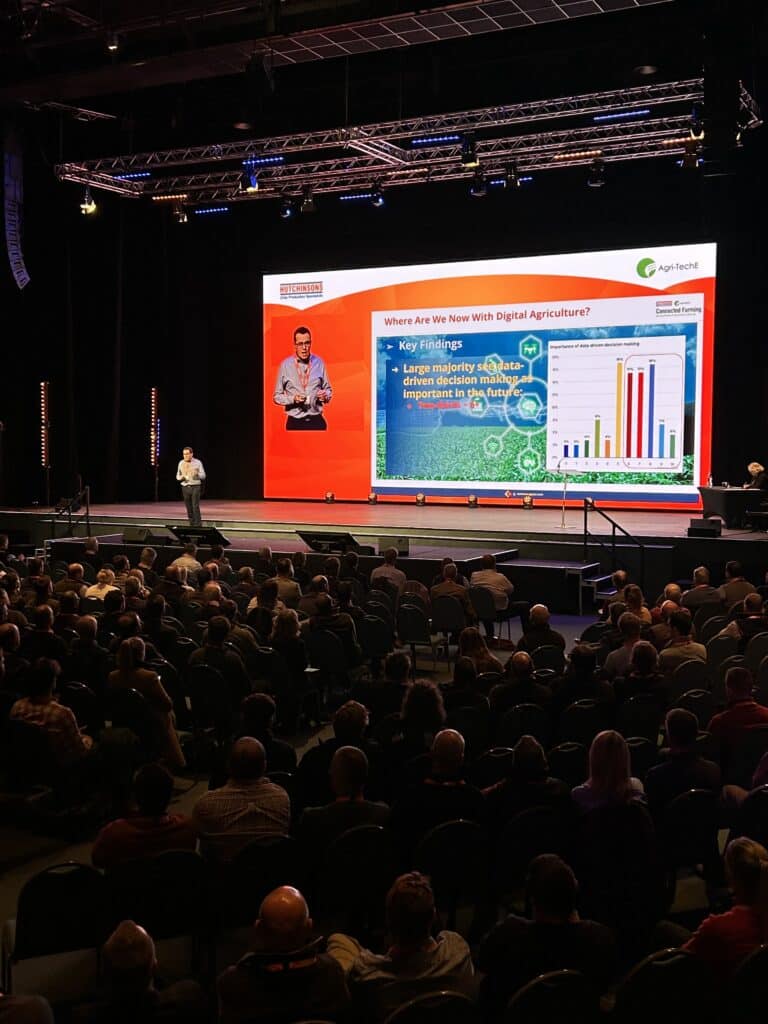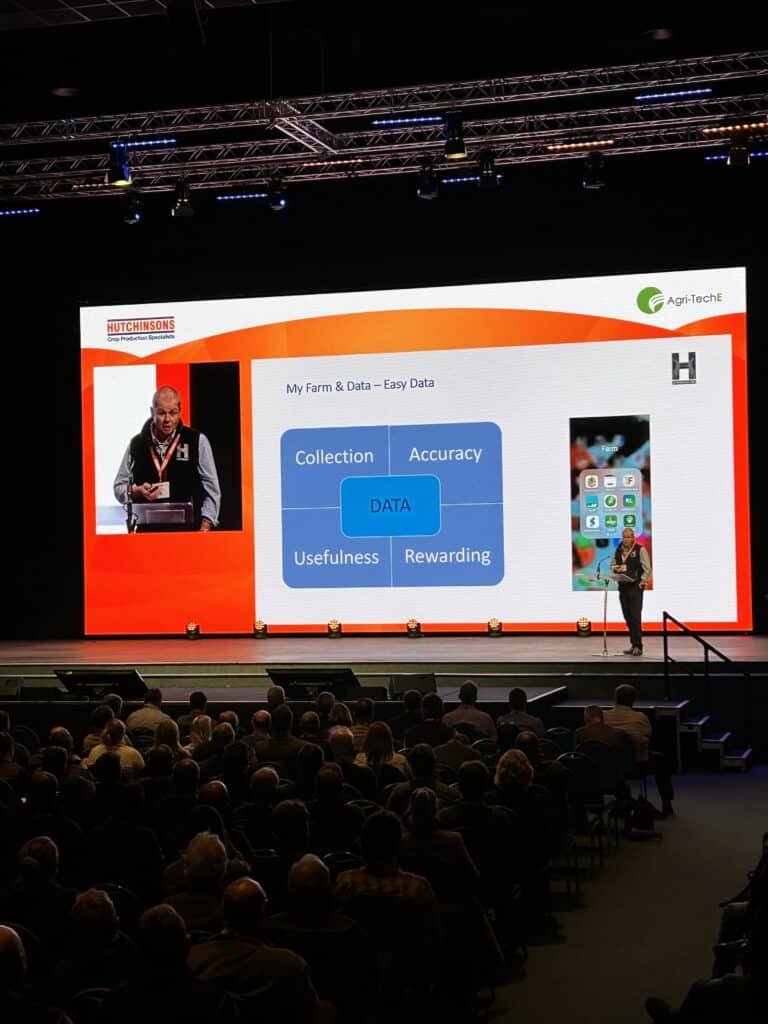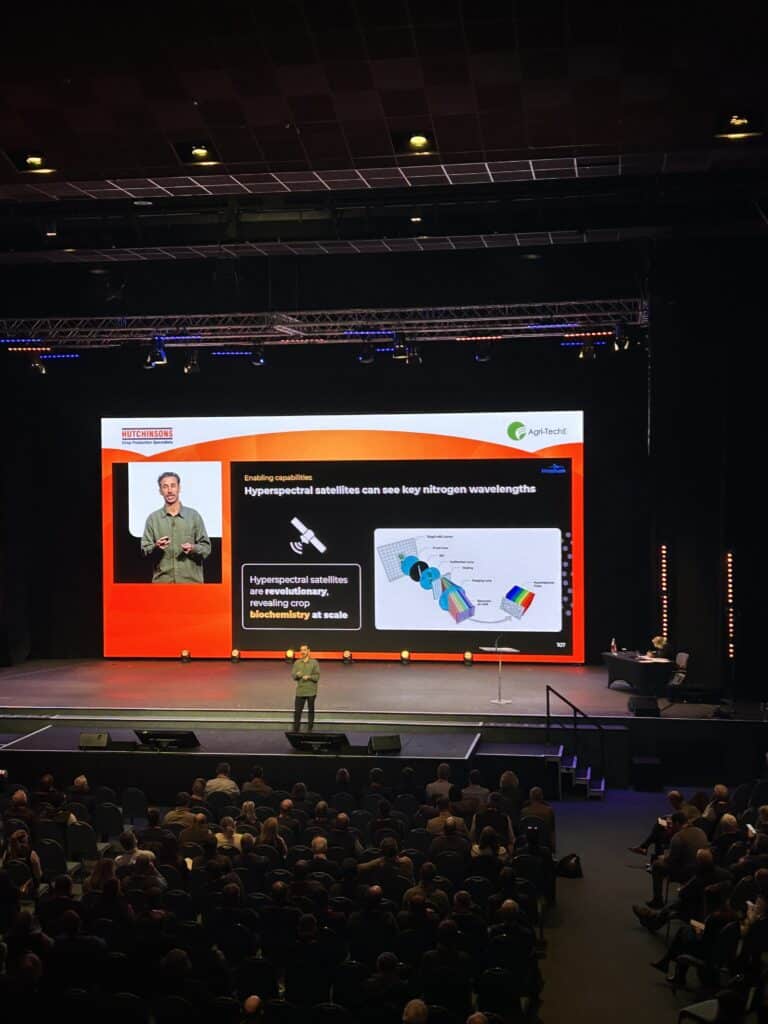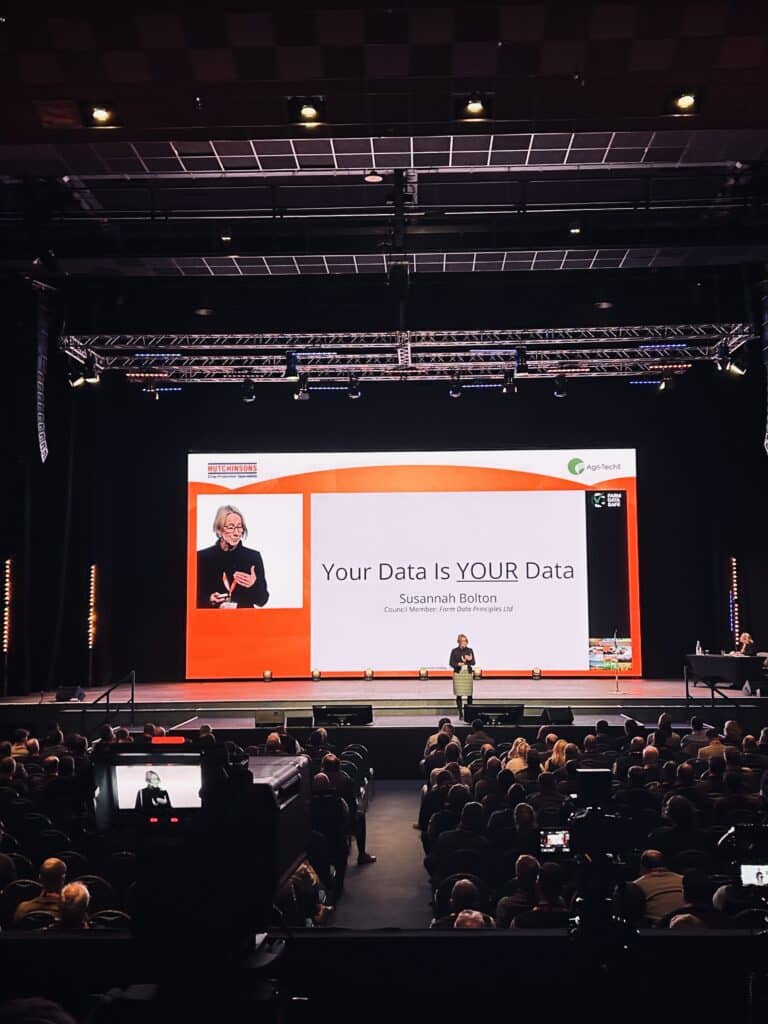Delivering the digital dream – Crop Production Magazine
Combining the resilience and intellectual capability of farming with new technology has the potential to achieve great things, was the take-home message at a recent conference. CPM joined delegates to...
Whereas in the past there may have been a reluctance to adopt digital tools in farm management, the results of a recent survey suggest those days are long gone – farmers are backing digital technology to help run their businesses now and will continue to do so in the future.
This statement was revealed at Hutchinsons’ connected farming conference, where details of the company’s latest research were shared for the first time. The independent survey involved qualitative 1-2-1 interviews with around 200 arable and mixed farmers from across England and Scotland, with the aim being to better understand where participants are on their digital journey.
To delve into the detail, agri-data expert, Julian Gairdner, shared the key stats. “Half of participants said digital technology is increasing in importance which rises to two thirds among the largest farms surveyed.
“The most popular precision agriculture tools being used were cited as MyJohn Deere followed by Trimble, SOYL and Omnia. Weather forecasting and What3Words were noted as the most used smart phone apps,” he explained.
For farming operations where digital tools are being used, three quarters said this involved autosteer whereas 40% use variable rate technology for fertiliser or seed, he continued. As for the drivers behind using such technology, 78% reported this was with the aim of saving money followed by gaining yield improvements and achieving efficiencies.
“When we looked at the specific farming activities which digital technology can improve, half of participants said meeting the requirements of auditing or compliance for agricultural schemes,” said Julian.
Barriers to progression
On the other side of the coin, the survey also explored what’s preventing growers from progressing their use of digital solutions. Julian highlighted that 70% of respondents said it was due to cost and return on investment concerns, which he said was of no great surprise.
Rounding up the findings, Julian summarised confidence levels. “So how confident to do you feel using this stuff? Three quarters ranked themselves as being a five or more with O being not confident through to 10 being super confident.
“The survey also highlighted that nearly 20% of participants saw data ownership and security as a barrier to uptake, suggesting this is a critical issue,” he said.
One farmer who’s already embracing technology is Long Sutton-based David Hoyles who shared his experience with the audience. He said it all started in 2007 when the farm introduced GPS steering to the business.
“However, we didn’t start collecting data from this until 2010 and it took another few years to make that useful. In fact, we’re still learning how to make that rewarding,” he commented.
David said in 2010 the farm started to use MyJohnDeere for yield mapping and telematics, Omnia in 2015 for variable rate seed and now nutrition, and in 2020, Bayer’s FieldView was introduced.
“We also use technology for water management to address legislative issues and to ensure quality, plus to help understand the performance of our renewable energy,” he added. “It’s all about being more efficient.”
With that in mind, Messium’s George Marangos-Gilks pitched his company’s concept for precision nitrogen applications, based on hyperspectral imaging. George explained this is the only satellite technology capable of detecting the specific infrared wavelengths required for remote crop nitrogen analysis.
“Every chemical or nutrient has its own spectral signature, and hyperspectral can ‘see’ nitrogen wavelengths to understand the plant’s nutritional status. Excitingly, hyperspectral satellites have just become commercially available,” he said.
Compared with legacy solutions, George suggested although effective, laboratory tests are time consuming and expensive whereas former NDVI-based satellites can only assess biomass and struggle to pick up nitrogen in plants.
“Hyperspectral drones have potential but are very expensive and have limited battery life. Finally, tractor sensors – these are limited in inlin accuracy, don’t factor in weather and have timing issues,” he pointed out.
In contrast, Messium’s offer involves weekly, highly detailed insight into crop nitrogen, centred around hyperspectral satellite imaging. “It’s a precision solution for fertiliser that farmers could only dream of a decade ago,” he proposed.
In addition to the hyperspectral imaging, George explained that the firm also measures crop biomass, rainfall, sunlight hours, soil moisture and soil organic mineralisation, to build a complete picture for the farmer.
“That way we can calculate how far above or below optimum nitrogen level a crop actually is, in real-time,” he said.
Then, to reflect on the previously raised point of data ownership, Dr Susannah Bolton shared an update on the Farm Data Principles initiative – a not-for-profit organisation first formed in 2023, chaired by Tina Barsby OBE.
Power statement
Susannah began by reminding the room: “Your data is your data and that’s really important because the first question we should all be asking is, will I be realising the value from that information?
“To achieve that, we require good data governance so its value can be unleashed without concerns of something being amiss or that someone might use our data in ways w we hadn’t agreed to in the first place.”
She added that at the moment, there remains significant fragmentation and a lack of standardisation. As such, a group of independent industry individuals have come together to form Farm Data Principles, with the aim of meeting the demand for data governance without creating barriers.
And now, the organisation’s farm data safe certification mark has been approved by the government’s Intellectual Property Office (IPO, also known as the Patents Office), she highlighted.
“The business is up and running so you all have the potential to ask those with whom you share your data with, whether they’re adhering to the principles of farm data governance. It’s important to enable this process so we can accelerate the digitisation of the industry and achieve our potential.”
Susannah pointed out that having heard how data and digital technology can enhance the performance of farm businesses, it’s now crucial that those who utilise data to develop solutions such as Omnia are recognised for signing up to the principles of good data governance and championing fair and equitable data use.
This is because by doing so, organisations agree to adhere to four statements: your data is your data (1), our organisation makes data easy (2), our organisation keeps your data safe (3), and our organisation is clear about value and benefit of data sharing (4).
She said that once a business signed up to the scheme, they are has then open to public scrutiny and if the principles aren’t adhered to, there are clear dispute procedures.
“As for the value of certification to farmers – it should help you to understand what type of data the handler is asking for and storing on your behalf. It makes it clear that you retain the right to the data set and that the handler’s use of it is for what you originally signed up for.
“Finally, your data is stored safely and you’ll be supported correctly to share your data should you want to. We hope you’ll champion this scheme and ask those whom you share data with if they’re certified and if not, why not?”
A range of organisations have already signed up to the initiative including Hutchinsons, Map of Ag, Red Tractor, Yagro and Sainsbury’s, with others in the pipeline, concluded Susannah. Hutchinsons’ Omnia is certified under both ISO27001 for data security and the Farm Data Principles scheme for farm data governance.



